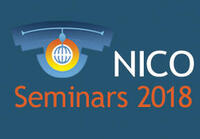Monday, 25th June – h. 15:00
Seminars Room, NICO
Luca Guglielmo Pradotto, MD, PhD
Division of Neurology and Neurorehabilitation – IRCCS Istituto Auxologico Italiano, Piancavallo (VB)
Pathogenic Mechanisms and New Molecular Therapies in Transthyretin-related Amyloidosis
Transthyretin (TTR)-related amyloidosis (aTTR) is the most common hereditary systemic amyloidosis. In aTTR polyneuropathy is the earliest manifestation of a multiorgan, life-threatening disease affecting also the heart, the gastrointestinal tract, the kidneys, the eyes. TTR amyloid formation is a multistep process in which TTR tetramer disassembling is the first and the rate-limiting step. Amyloidogenic TTR gene mutations reduce TTR tetramer stability leading to its dissociation into unfolded TTR species, monomers and dimers.
These partially unfolded TTR species spontaneously self-aggregate into oligomers, protofibrils and mature fibrils. Extracellular TTR aggregate deposition is tissue specific and followed by degenerative processes leading to programmed cell death. Despite aTTR is a severe life-threatening disease, aTTR is tractable and liver transplantation is the first-line specific treatment. Recently other new anti-amyloid therapies are available. A first molecular approach is to prevent TTR tetramer dissociation by specific stabilizers.
The stabilizers now available are thyroxine mimicker compounds which bind covalently the thyroxine binding pocket of TTR tetramer. Other innovative available medicines are siRNA which block the hepatic production of TTR. Future anti-amyloid approaches are to remove the amyloid deposits by monoclonal antibody anti serum amyloid P component or by doxycycline–taurodesoxycholic acid treatment, which were effective in transgenic mice.
Host: Alessandro Vercelli








